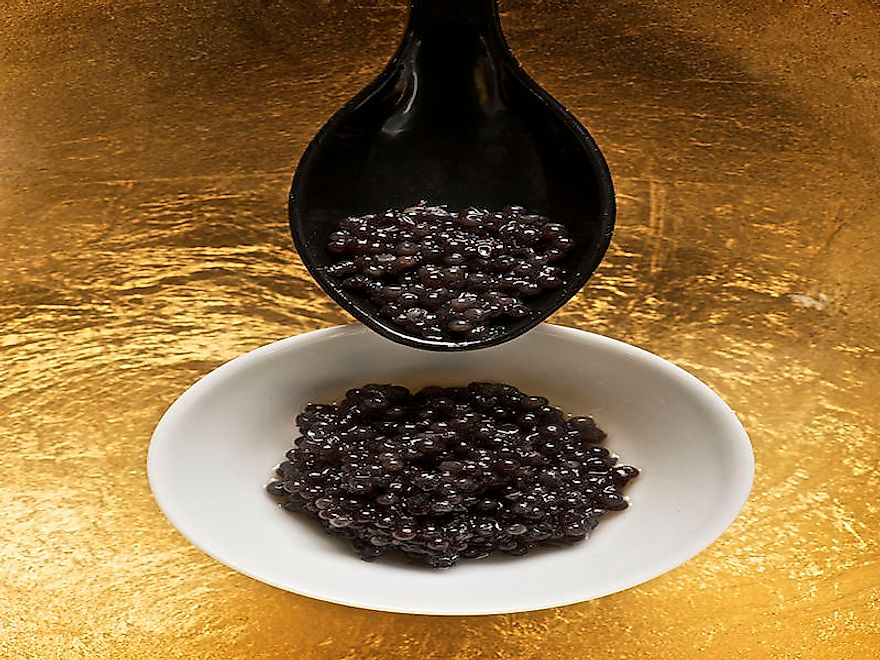The Illegal Caviar Trade - Countries Most Involved

Caviar is a delicacy made from salt-cured fish eggs. Caviar refers to the eggs or roe from a rare wild type of fish known as sturgeon found mainly in the Black Sea and the Caspian Sea. The fish eggs can be fresh or pasteurized. However, pasteurization reduces the economic and culinary value of the delicacy. It can also be used to refer to roes from other fish like salmon, trout, whitefish, and steelhead. Caviar comes in four varieties Beluga, starlet, Ossetra, and Sevruga. Caviar from Beluga sturgeon is the rarest and the costliest and is mainly found in the Caspian Sea along the borders of Iran, Kazakhstan, and Russia. The demand for Beluga caviar is due to the large size and its softness.
Reasons For Illegal Caviar Trade
Initially, the US and Canada were the primary sources of caviar with major fishing in Lake Sturgeon. Caviar’s demand in Europe and other parts of the world has led to overfishing of sturgeon in most lakes around the world including Russia, Iran, North America Midwest, Azerbaijan, and Ukraine. Caviar trade is highly profitable with hotels in Europe paying poachers and legal traders of excellent amounts of money for the quantity of caviars sold. Due to overfishing, sturgeon species have been declared endangered species and rated vulnerable by the IUCN Red List of endangered species. The fishing in both Caspian Sea and the Black Sea has been banned. The ban on sturgeon fishing has led to the development of aquaculture. However, illegal caviar trade continues.
Country Where Illegal Caviar Trade Is Highly Prevalent
The illicit trade is rampant in countries along the Caspian Sea especially in Russia where the trade on caviar was banned in 2007. Russia accounts for 38% of all illegal caviar trade seizure in the world between 1999 and 2014. The Islamic Republic of Iran and Ukraine also have a high number of illegal caviar trades accounting for 11% and 12% respectively. Other countries with rampant illegal caviar trade include Azerbaijan, Germany, Kazakhstan, Poland, and Turkey. These countries export either black or red caviar particularly to Europe illegally despite the restrictions and hefty penalty on fishing of sturgeon. The illegal market in Russia is well organized with a network of people who are involved in transportation, sales, and bribing of a government official and fish inspectors for smooth passage. Poachers use state of the art means of transport to sneak out illegal Caviar from these countries. A significant portion of this illicit trade is controlled by mafia who are protected by the government officials in these countries.
What Needs To Be Done?
The overfishing and overexploitation have led to a significant reduction in the number of sturgeons in most seas including Black and Caspian Seas. If illegal caviar trade is not brought to an end, then the sturgeon variety will be extinct in the next few years. The European countries where the demand for Caviar is high need to ban the import of Caviar into the region to help reduce illegal trade. Although there are laws in these countries prohibiting trade on caviar, the law needs to be enforced to break down the networks involved in the illegal trade.
The Illegal Caviar Trade: Top Source Countries Of Illegal Caviar Trade Seizures
| Rank | Country | Share Of Illegal Caviar Trade Seizures Worldwide, By Source Country (1999 to 2014) |
|---|---|---|
| 1 | Russian Federation | 38% |
| 2 | Islamic Republic Of Iran | 11% |
| 3 | Ukraine | 10% |
| 4 | Azerbaijan | 8% |
| 5 | Germany | 4% |
| 6 | Kazakhstan | 4% |
| 7 | Poland | 3% |
| 8 | Turkey | 3% |











